X Factor Technology Articles
Our articles explore the game of baseball through a sharper lens, challenging old assumptions, questioning popular narratives, and diving deep into what really drives hitting performance. From swing mechanics and timing to player development and misunderstood training trends, we tackle the topics that matter to coaches, players, and anyone who wants to think differently about the game. These pieces aren’t just about our technology, they’re about elevating the conversation around hitting with clarity, curiosity, and a commitment to truth over tradition.
June Featured Articles:
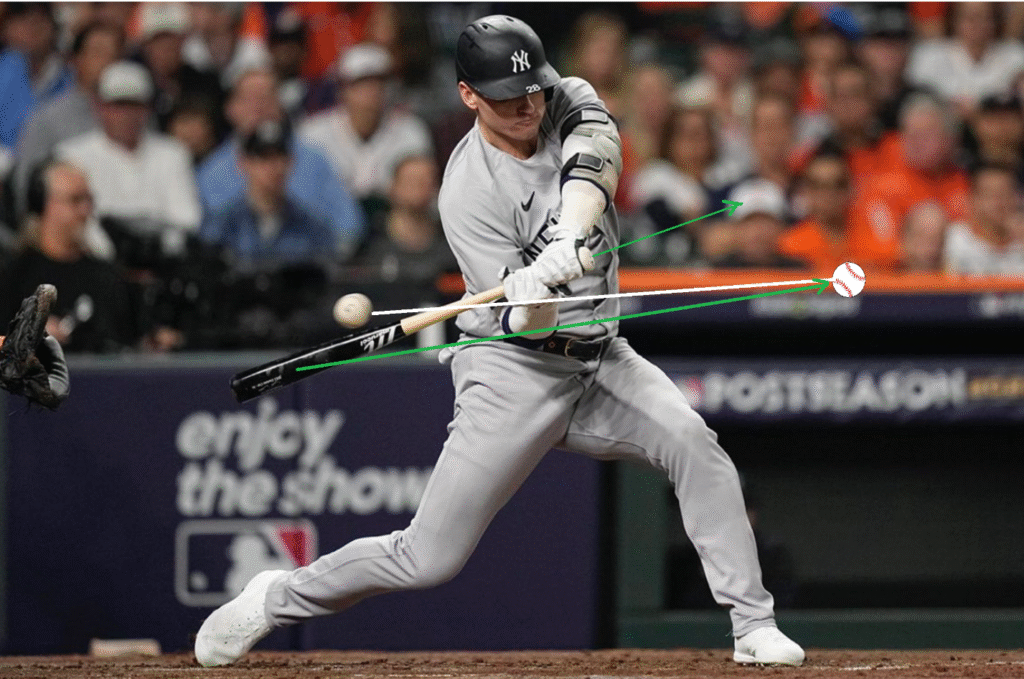
Swing Decisions versus Automatic Responses
Modern baseball, which prides itself on being data-driven, continues to rely on unsupported, assumption-based methods for the most critical part of hitting: timing. Despite decades of scientific research, the sport still leans on oversimplified ideas about automaticity, treating swing timing as a reflexive act once mechanical patterns are ingrained. This article challenges that belief and explains why timing is not a passive byproduct of repetition, but a conscious decision-making process that operates in real time.

The Epidemic of Misdiagnosis: Solving for Symptoms not Cause
Why Biomechanical and Psychological Fixes Fail When Timing Is the Real Problem
Introduction
In the industries of hitting instruction, sports psychology, and ecological dynamics, two dominant schools of thought often take turns misdiagnosing the same problem. One blames mechanics. The other blames mindset. But neither addresses the root cause.

The Spatial Nature of the Strike Zone and the Single Arc Swing
Much of hitting instruction is clouded by complexity—mechanical tweaks, situational cues, and contradictory advice about swing adjustments. But at its core, the act of hitting is spatial. The strike zone is a three-dimensional volume, and a properly sequenced, consistent swing arc—an “A” swing—can reach every location in that space without altering swing path or posture.

The Fallacy of Effective Velocity: Perception Can’t Be Quantified
Much of what Perry Husband hypothesizes in respect to swing biomechanics, I agree with. However, I struggle with the validity of his effective velocity theory. “Effective velocity” (eV) has been promoted as a framework for understanding pitch deception. The idea is simple but flawed: pitches at different locations in the zone “feel” faster or slower than their actual radar gun readings, and this altered perception changes hitter behavior.
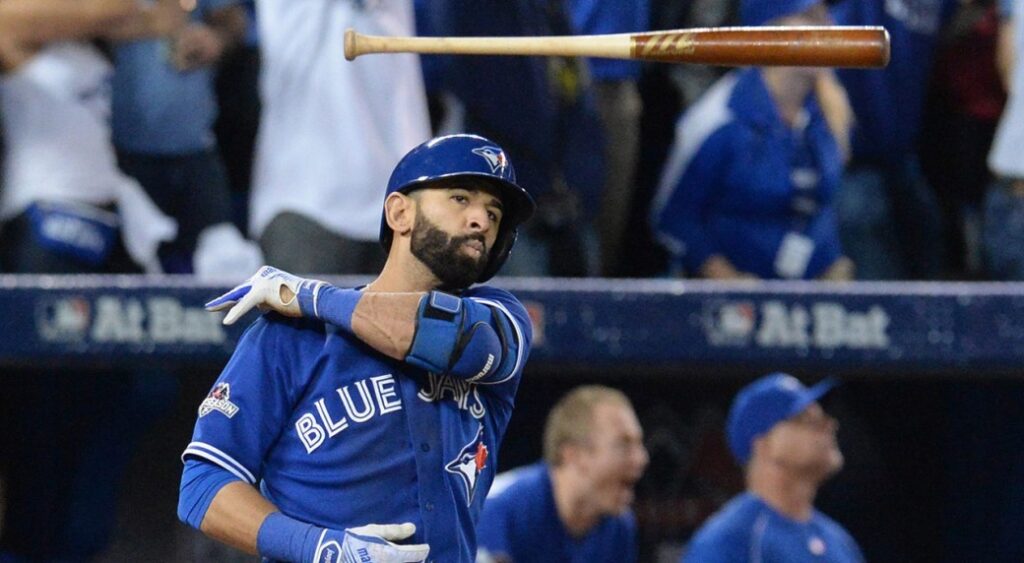
José Bautista: A Case Study in Multi-Faceted Timing
Timing in hitting is not a matter of mastering any one aspect of the process. It is a layered procedure, composed of multiple facets. Syncing with the pitcher is one aspect of timing. Deciding when to initiate the swing is another, completely separate facet. And accounting for the time it takes to execute that swing is a third. All are separate but essential, interrelated components.

Batted Ball Distance Calculator Use Case and Predictive Modeling
Good Outcome vs. Optimal Outcome—Aaron Judge’s Double Under the Lens of Predictive Modeling
On April 21st, 2025, Aaron Judge turned around a 97.4 mph four-seam fastball and drove it 359 feet into left-center field. The ball left his bat at 107 mph with a 19° launch angle—loud contact, by any standard. Statcast called it a double. Broadcasters called it a success.
Most analysts stop there.
I don’t. I don’t celebrate the result. I evaluate the collision.
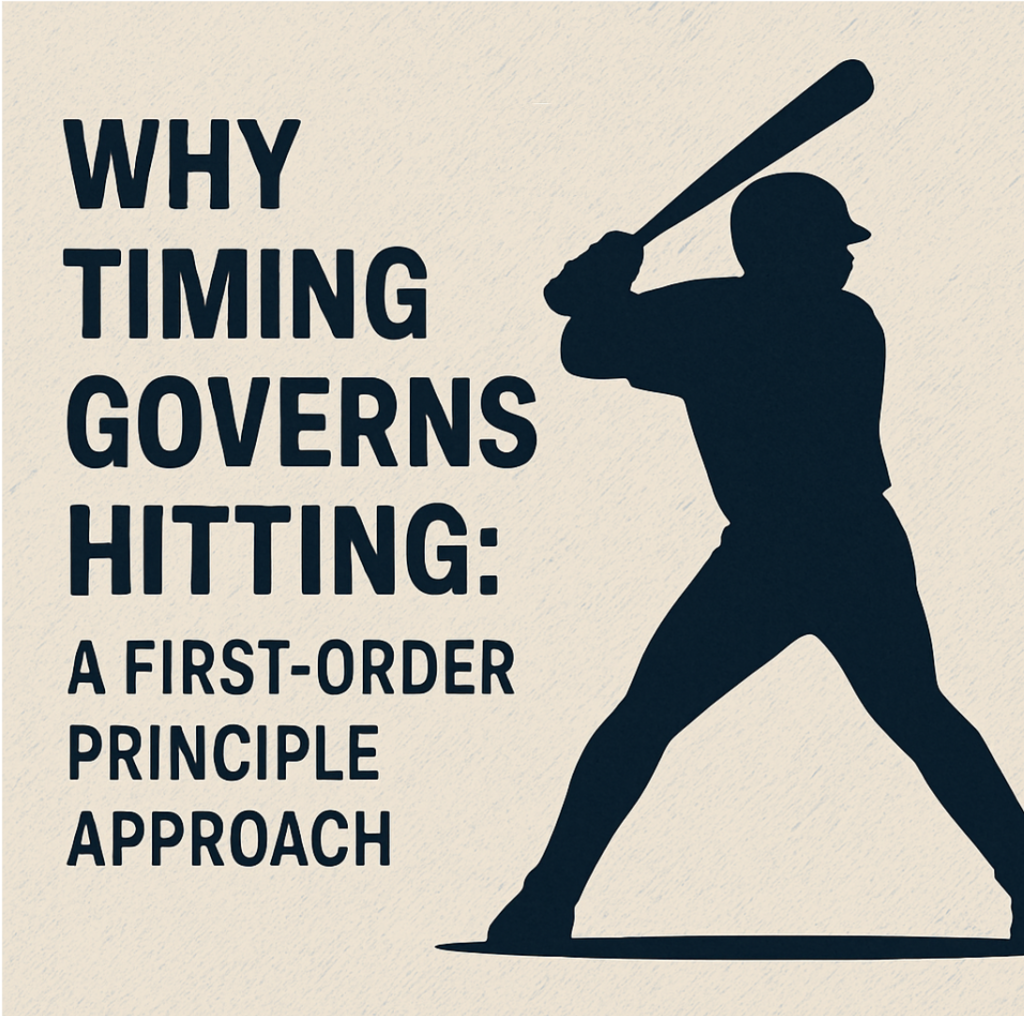
Why Timing Governs Hitting: A First-Order Principle Approach
Hitting, at its core, is a spacetime, temporal-spatial, coordination problem. Mechanics matter, but they’re not first in line. Before you can refine how to move, the brain must first solve when. This isn’t philosophical. It’s empirical—backed by decades of developmental research across reaching, locomotion, and object interception. The evidence reveals a consistent order of operations in motor learning: timing stabilizes before mechanical precision emerges.
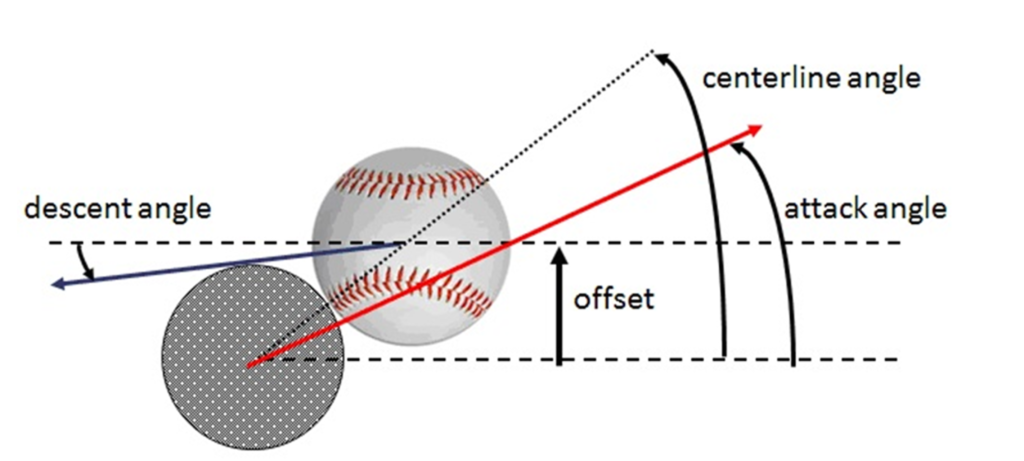
Explaining Professor Alan Nathan’s Optimal Swing Theory and how it Morphed into an Inefficient Swing Philosophy
Today, too many analytics are focused on outcome, but not the methods or means to achieve or improve upon them. A hitting paradigm has been built on sound science, but is this science being interpreted and applied incorrectly, and are hitters suffering the consequences as a result of the inefficiencies of the methods aimed at achieving specific objectives?
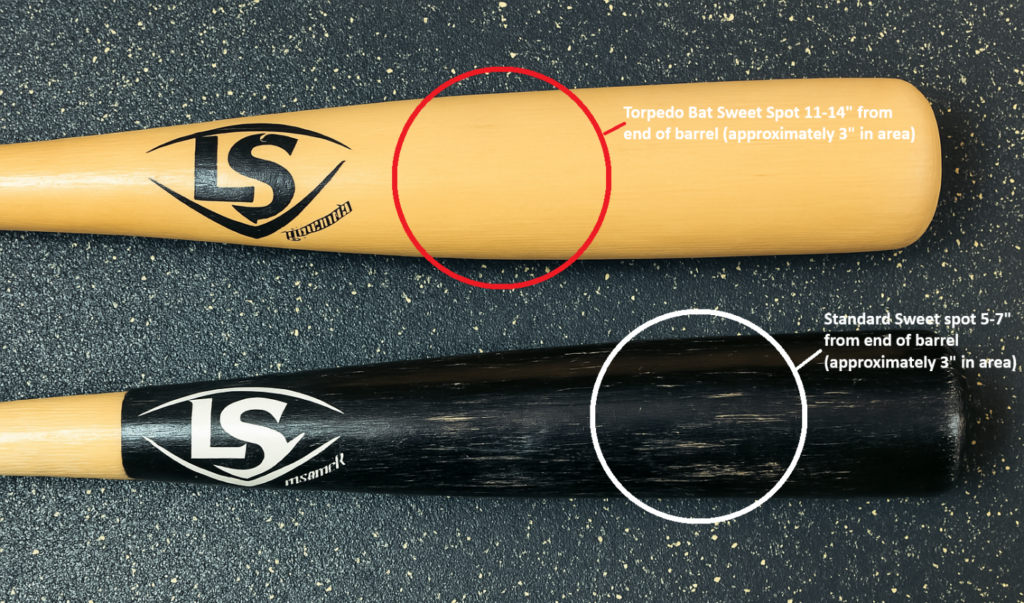
The Torpedo Bat May Not Be for Everyone: Understanding Bat Profiles and Hitter Identity
The Torpedo Bat has been marketed as a breakthrough, an engineered rebalancing of barrel mass that promises more control, better outcomes, and a feel that flatters otherwise poorly made contact. But underneath the surface metrics and glowing endorsements is a more sobering reality: this bat doesn’t raise the standard. It lowers it.

The Torpedo Bat: Repositioned Sweet Spot, Misplaced Solution
Over the last week, the Torpedo Bat has dominated headlines across MLB media outlets. With a sudden surge in home runs, glowing player testimonials, and the endorsement of a physicist credited with its design, it’s been framed as a potential breakthrough, a modern solution to an increasingly pitcher-dominated game.

Part 3: Depth Without Definition: The Flawed Foundation of Statcast’s Contact Point Data
Statcast’s newest metric, contact depth, is being treated like the Rosetta Stone of hitting. Analysts are quoting how many inches in front or behind the plate hitters make contact, as if that number alone explains power output or approach efficiency.
It doesn’t.
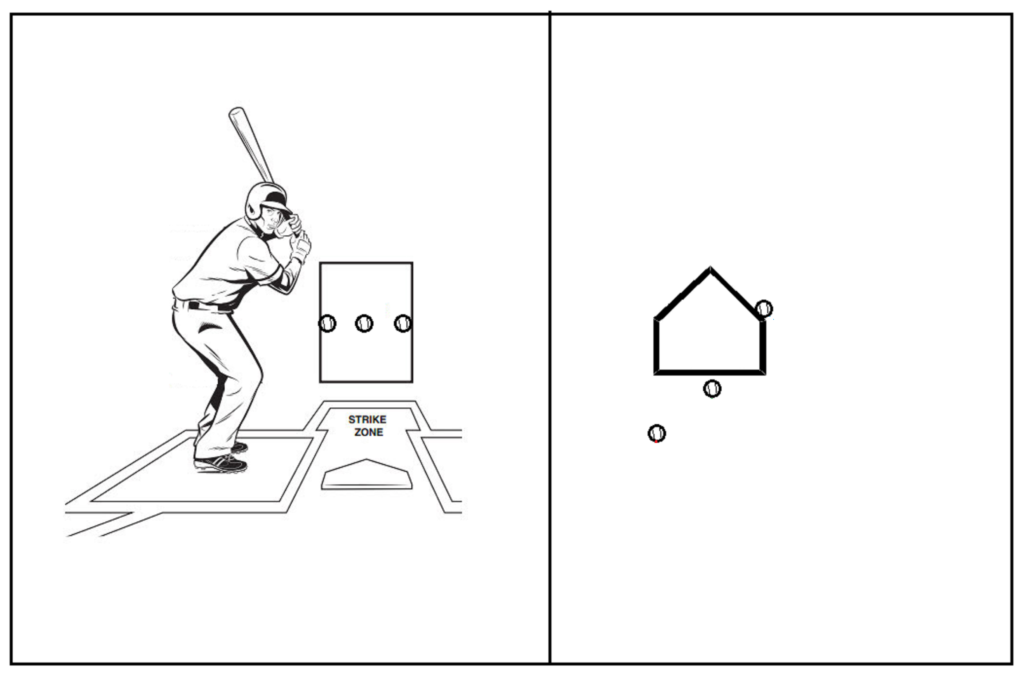
Part 2: The Statcast Illusion: When Data Becomes Anecdote
Baseball’s latest analytical advancement, Statcast’s new contact-point data, promises to revolutionize how we evaluate hitters. But how that data is interpreted is just as important as the data itself.

Part 1: Why Statcast’s New Contact Point Data is Only Half the Story
Baseball’s understanding of hitting may have evolved… sort of.
In a recent article on MLB.com, Shohei Ohtani contact point Statcast analysis author David Adler discusses how Statcast’s new contact point and depth data, set to debut on Opening Day….

The Myth of Movement Variability Training in Baseball. Why? Because Movement Solutions Are Already Wired Into the Brain!
In the ever-expanding cottage industry of baseball training, a new wave of methodologies promises to “unlock” athletic potential through unconventional movement drills.

The Ecological Approach to Reaction Time: Analyzing Dr. Andrew Wilson’s Perspective
Dr. Andrew Wilson, a leading researcher in ecological psychology and perception-action theory, has spent years challenging how reaction time is captured and analyzed in sports.
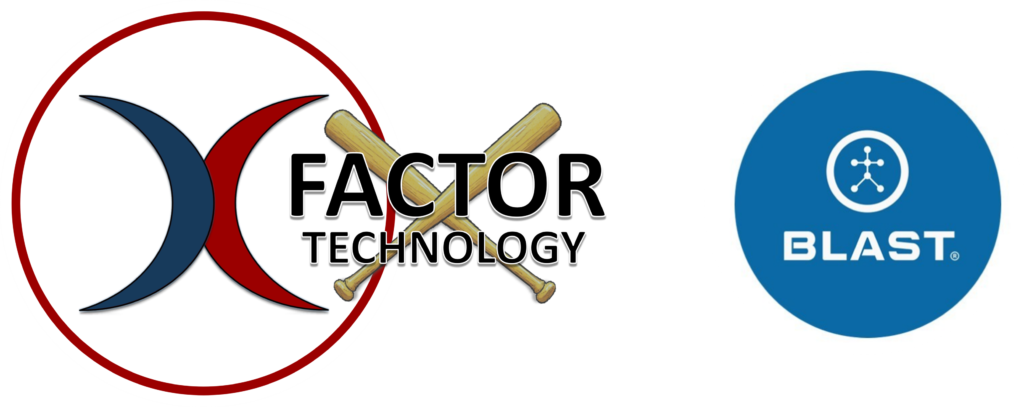
Why Your Swing Tracker Is Only Telling You Half the Story
Want to see why traditional swing trackers don’t tell the whole story? Watch this short video to understand the limitations of systems like Blast Motion and how xFactor Swing Dynamics Pro™ delivers real, actionable data that actually helps hitters improve.

Ted Williams and the Myth of Modern Swing Theory: Why Clean Rotation is Overlooked
Elite hitters often demonstrate movements that are compensatory in nature. The scissor kick, for example, is a common feature in many high-level swings, but it isn’t necessarily an inhibitor to performance. Plenty of great hitters use it while still….

The Physics of Athletic Swings: Why Baseball Is Different
Have you ever noticed how a tennis player leaps into the air when serving or how some golfers push upward just before striking the ball, momentarily reducing their connection to the ground?

Preparedness: Anticipation Without Predetermination, an Open Gaze, and Mental Relaxation in Interception Sports
Preparedness—anticipation without predetermination, an open gaze, and mental relaxation. This is the foundation of elite performance in any sport that requires an athlete to intercept an external stimulus.

Does Practicing the Wrong Way Really Improve Hitting? A Critical Examination of Skill Acquisition Claims
A recent study investigated whether introducing movement variability in hitting practice enhances perception-action coupling and improves swing decision-making.

Follow-Up Critique: Addressing Unexamined Assumptions in the "Wrong Way" Study
In my initial evaluation of the study on movement variability in hitting, I pointed out that its design presented a false dichotomy by comparing only two structured training conditions—a “right way” group and a “wrong way” group—without including a control group of any kind. This omission made it impossible…

Defining Connection in the Baseball Swing: Moving Beyond the Golf-Based Model
The term connection in swing mechanics has become a widely used but often misunderstood concept in baseball and softball swing analysis. Originally rooted in golf, the idea of connection was developed around maintaining a fixed club-to-body relationship to optimize swing efficiency.
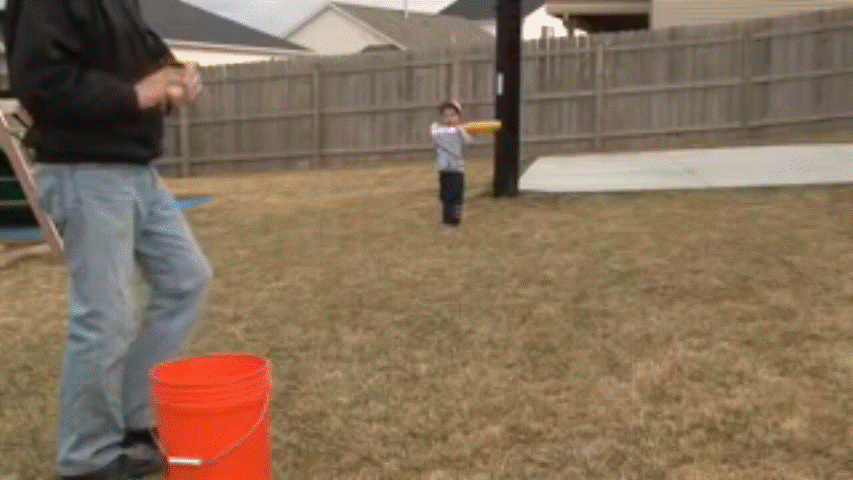
Subconscious Mastery in Hitting: Intent Over Instruction
In this GIF, we observe a toddler effortlessly executing a swing that achieves both bat-ball intersection and an intent-driven outcome. This seemingly simple act reveals a sophisticated process process where the toddler demonstrates an extraordinary, yet common ability.
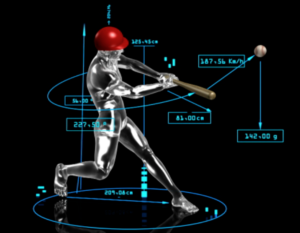
From a Vague Instinct to a Deliberate Science: Everything You Need to Know About Batter Swing Timing Explained
This article examines batter timing independent of the load sync process. While syncing a batter’s preparatory moves with a specific point in the the pitcher’s windup is important and an aspect of timing, it only sets the foundation for…
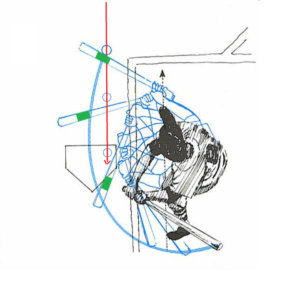
Misconceptions About Early Barrel Entry and Bat Speed in Hitting Dynamics Part I
There is a widespread misconception of viewing the bat swing two-dimensionally, which is a gross oversimplification of the more complex motion occurring during bat swings.

Misconceptions About Early Barrel Entry and Bat Speed in Hitting Dynamics Part II
In my previous article, I discussed common misconceptions about early barrel entry and its impact on swing dynamics. In this follow-up, I want to delve into a critical, yet often overlooked, factor….
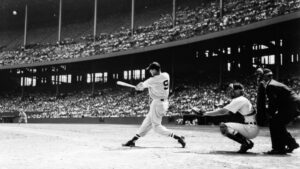
The Missteps of Mimicking Great Swings
Hitting a baseball is hailed as the most challenging feat in sports. Hitting the ball well demands a blend of mechanics, timing, and intent. While we can observe certain mechanical similarities among great hitters
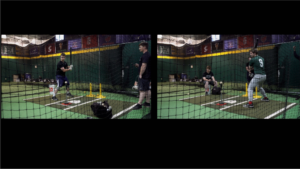
The Perils of Isolated Basic Swing Time Metrics
Why are advanced swing time metrics important and why isn’t the basic swing time metric you’re getting from blast motion or diamond kinetics enough?
To answer this question, we’ll start by comparing the basic swing time metrics captured by blast motion and xFactor technology, ….
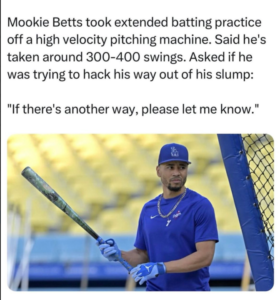
There Is Another Way — A Smarter Solution
Mookie Betts took extended batting practice off a high velocity pitching machine. Said he’s taken around 300-400 swings. Asked if he was trying to hack his way out of his slump:
‘If there’s another way, please let me know”
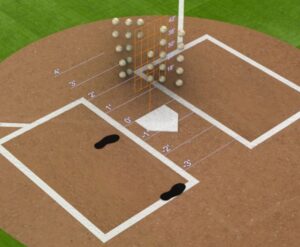
Misconceptions of Power: The Hidden Pitfalls of Hard-Hit Balls and the Overemphasis on Forward Contact Points
In the StatCast era, bat speed and exit velocity have become the most celebrated metrics of hitting, often viewed as the ultimate indicators of offensive success. The assumption is simple: the higher the bat speed, the harder a ball is hit, therefore, ….
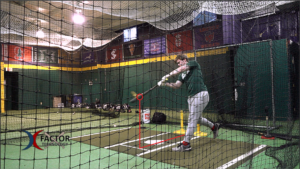
The Relationship Between Decision Timing and Swing Biomechanics in Baseball
There is a widespread belief that mechanical perfection is the key to batting success. Traditional swing training focuses heavily on biomechanics—the assumption being that if a player’s swing mechanics are “high-level”, contact with the ball will naturally follow. However, this belief is an oversimplification….
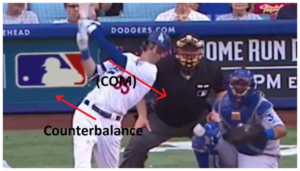
How to Prevent Flying Open or Over Rotation in baseball and Softball Swings Without Special Drills
Over rotating or flying open in baseball and softball bat swings. There is a lot of discussion about over rotating the hips, chest and shoulders during bat swings. Over rotation of the hips or “flying open” negatively affects swing direction, so there are a lot of drills designed to prevent this.
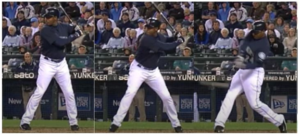
Ken Griffey jr., The Golden Ratio and The Perfect Batting Stance
Baseball, at its core, is deeply rooted in biomechanics. Balance, force, and repeatability is critical for successful hitting. By analyzing the stance and swing of Ken Griffey Jr., a remarkable synchronicity emerges between his technique and the principles of the golden ratio, a mathematical constant prevalent in nature.
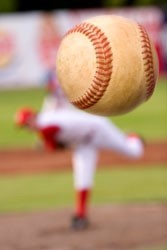
Part 1: Vision Strategies for Baseball/Softball Batters
In the early to mid-2000’s, I was training the son of Seattle Mariners vision specialist, Dr. Doug Nikaitani. In exchange for batting lessons for his son, Dr. Nikaitani trained me on vision strategies and a condensed education on vision.
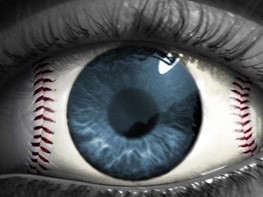
Part 2: Seeing Beyond Mechanics: Vision Insights
My training with Dr. Nikaitani not only helped me learn about vision strategies but also taught me to recognize signs of vision deficiencies that can inhibit batters. This was something I had great interest in and had invested a lot of time and research on, already.
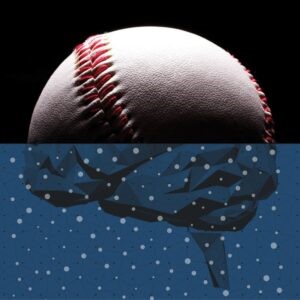
Part 3: Exploring Vision Struggles in Baseball
In 2003, while working with a Tampa Bay Rays hitter whom I had been coaching since 1998, I had developed an intimate understanding of his swing. Through an examination of game video he sent me, I noticed that he was struggling to judge pitches effectively.
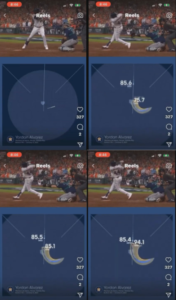
The Myth of the Pendulum: Insights into Barrel Acceleration in Baseball Swings
Barrel Acceleration: In this series of frames, we can observe the acceleration of Yordan Alveraz’s swing along three common points of contact: Outside, middle, and inside. To qualitatively assess the rate of barrel acceleration, we must first establish a fixed point from which to measure from. That point is the front edge of home plate, in this scenario.

The Benefits and Implementation of Cue-Based Errorless Training
Batting practice in baseball serves a critical role in the development and refinement of a player’s ability to time a swing to hit a pitched ball. This practice, whether conducted with live pitchers or pitching machines, is rooted in the cognitive process of perception and action coupling, and encoding memory, whereby the batter develops references for future swing decisions.
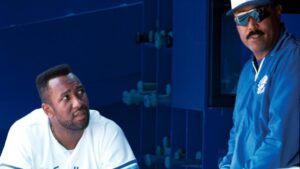
How a Commonly Used “Classical” Swing Timing Cue Was Perfected and Modernized Through Technology, But Still Eludes MLB organizations’ Belief Systems
Cito Gaston, hitting coach Gene Tenace, and first base coach Dwayne Murphy, had been working with Bautista all season to improve his timing at the plate after noticing that he was consistently late, especially against good velocity.
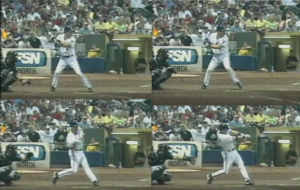
Revisiting Jeff Cirillo's Hitting Mechanics: A Journey from Slump to Resurgence
In the fall of 2004, I was searching for my next career advancing opportunity after having created a prospect for the Ray’s out of a player I’d discovered and developed, Matt Fields. It arrived in the form of then ex-Major Leaguer, Jeff Cirillo.
At the time, I was performing the batting training duties at a clinic for select, elite baseball players with Omar Vizquel as the fielding coach

Exploring Bat Speed’s Purported Link with Contact Rates
To reverse engineer the proposition that heightened bat speed contributes to improved bat-to-ball contact rates, requires investigating the intricacies of this relationship. The systematic approach to data collection demands meticulous attention to detail. The goal is to explore the nuances between heightened bat speed and a batter’s capacity to consistently connect with the ball.
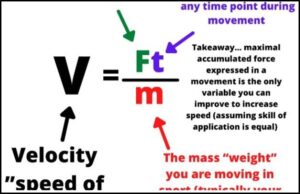
An Unbiased Evaluation of Arguments Relating to Claims Increased Bat Speed Results in Increased Bat to Ball Hit Rates
Every paper I write in the AI era, is run through an AI program. I use AI to check facts, grammar and to provide an objective evaluation of the essence and flow of my articles, opinion pieces as well as my technology write-ups.
I recently wrote an opinion piece on claims that bat speed increases lead to improved bat to ball rates.
Here I submit the unbiased evaluation of the arguments, provided by a popular AI chat program.
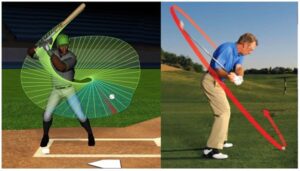
The Limits of Micromanaging Metrics: A Comparative Study on Vertical Bat/Club Angle in Baseball and Golf Swings.
MLB methods, and by proxy, many coaches, micromanage through metrics interpretations, leading them to believe they can create controlled swing patterns from them, with a particular emphasis on the correlation between vertical bat angle, and batted ball launch angles.
However, it’s essential to note that VBA is primarily a consequence of the batter’s natural hand-eye coordination system, which operates at a subconscious level.
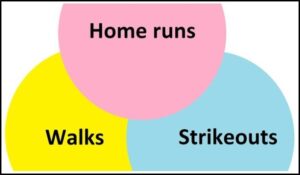
The Three True Outcomes Approach and the Complex Reality of Modern Baseball Strategy
In recent years, analytics have taken grip of batting strategy. Through this, the Three True Outcomes approach has emerged, emphasizing home runs and walks while marginalizing strikeouts. Yet, an in-depth exploration of statistical trends spanning two distinct eras prompts a reconsideration of the assumed dominance of this strategy.
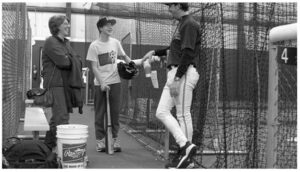
The Inherent Logic of Motor Learning
Motor learning is a biological marvel. Though coaching methods vary, one constant remains—the brain’s innate ability to create logical motor plans. By examining observations from toddlers learning basic skills to athletes mastering their craft, we gain insight into the fundamental principles that drive motor learning.
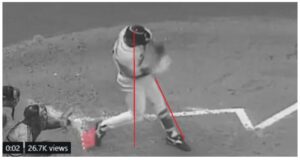
Is A Biomechanics Certification All It's Cracked Up To Be?
This is a Twitter post from On Base U, an organization that certifies coaches in biomechanics for batting and pitching. It shouldn’t be surprising that experts in golf would apply their understanding of swing mechanics to baseball batting incorrectly. After all, we are all limited to asking and answering the questions given our experience in a particular field.
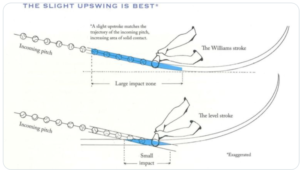
Baseball's Launch Angle Revolution
Have you ever wondered where the obsession with launch angles comes from? It’s one thing to say, “too many hitters today are swinging from their asses”. That’s an easy enough observation. The question that remains is, why?
A few years back, I wrote an article that was published by Inside Pitch magazine (May/June 2019) titled, In Pursuit of the Optimal Swing. It was an op-ed of sorts, to physicist Alan Nathan’s article, Optimizing the Swing, published by Hardball Times (Nov 2015).
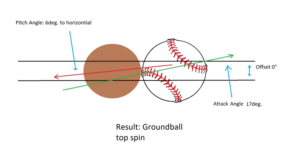
The Sweet Spot Balancing Power and Consistency in Baseball Swings
This paper is a follow-up to my previous work comparing downward and upward swing paths and their effects on optimal launch angles for maximum flight distances of batted balls. While that study focused on two extremes, 0-dgree flat attack angles compared to a 17-dgree attack angle, this one will examine a wider range of swing paths, this time considering the margin of error and difficulty of execution.
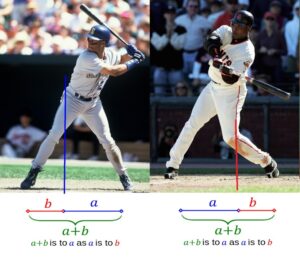
The Physics of Generating Power in a Baseball Swing
Pyramids have withstood the test of time due to their unique structure and weight distribution. The same principles of weight distribution and stable connection to the ground are crucial in generating power in human movement, particularly in a bat swing.
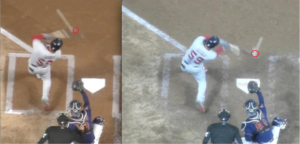
Spatial Memory and Bat Orientation: Synaptic Connections for Intertwined Memories
The creation of a memory that links spatial information with the orientation of the hands and the bat is a critical aspect of successful hitting in baseball.
The memory that binds spatial predictions, contact depth memory, and the arc orientation of the bat is a central aspect of intentional ball placement in baseball hitting. This memory forms through consistent observations of the pitch’s trajectory while considering the batter’s position and pitch location.
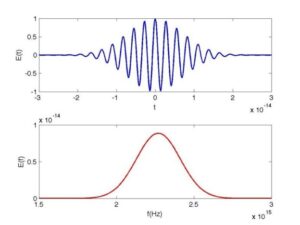
Is Cue-Based Errorless Training Simply Producing a Pavlovian Reflexive Response? No.
Concerning cue-based learning versus natural decision-making or real-world decision-making, in the context of cue-based or errorless learning, prompts or cues are utilized to guide decisions, leading to specific actions or responses. This approach assumes that the cognitive interpretation of the decision is essentially the same as it would be if arrived at organically or ecologically, without prompts.
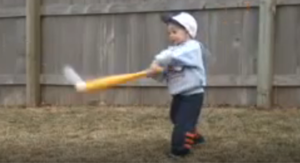
The Role of Subconscious Motor Solutions in Hitting a Baseball
Hitting a baseball is a challenging task that requires accurate timing and precise movements. However, it is interesting to note that young children, particularly toddlers, are able to swing and hit balls with perfect angles without being taught. This is because their movements are guided by their subconscious, allowing for natural and efficient motor solutions.
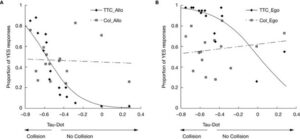
Baseball Swing Accuracy: Tau, Tau-Dot and Online Control Explained
The ability to accurately intercept or avoid moving objects is essential to many human activities, from stopping a car in time to avoid a collision to hitting a baseball. The brain uses a complex set of calculations, including tau and tau-dot, to predict the time to contact and adjust movements accordingly.
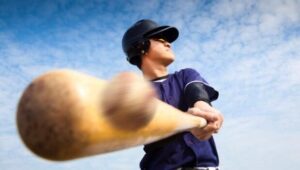
Velocity Perception and Prediction Systems
I’ve written quite a bit about the processes of visual perception and the role tau & tau-dot play in our prediction of ball arrival time and location. Here, I will discuss the interplay of other senses and how they help us provide informed decisions when hitting baseballs.
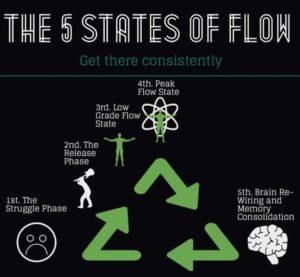
Unlocking Peak Performance: Cue-Based Training and the Path to Flow State
In this article, the captivating world of flow state and its profound impact on athletic performance is explored. While cue-based training is a focus of the discussion, it’s important to note that achieving flow state is not limited to a single method.
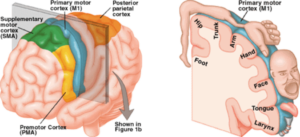
The Mental Side of Performance Outcomes
While researching visual and motor memory, I came across the work of a pair of neuroscientists who worked with a Major League baseball team, Jason Sherwin and Jordan Muraskin, co-founders of deCervo. They were commissioned to perform neural assessments of several minor league hitters.
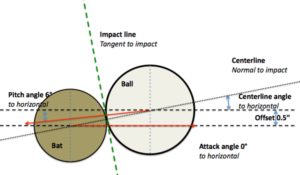
In Pursuit of the Optimal Swing
I will begin this study and discussion by stating, I absolutely agree with Professor Nathan’s conclusions for optimal attack angle for optimal launch angle to achieve maximum flight distance of a batted ball. This statement, on its own, requires a great deal of explanation.